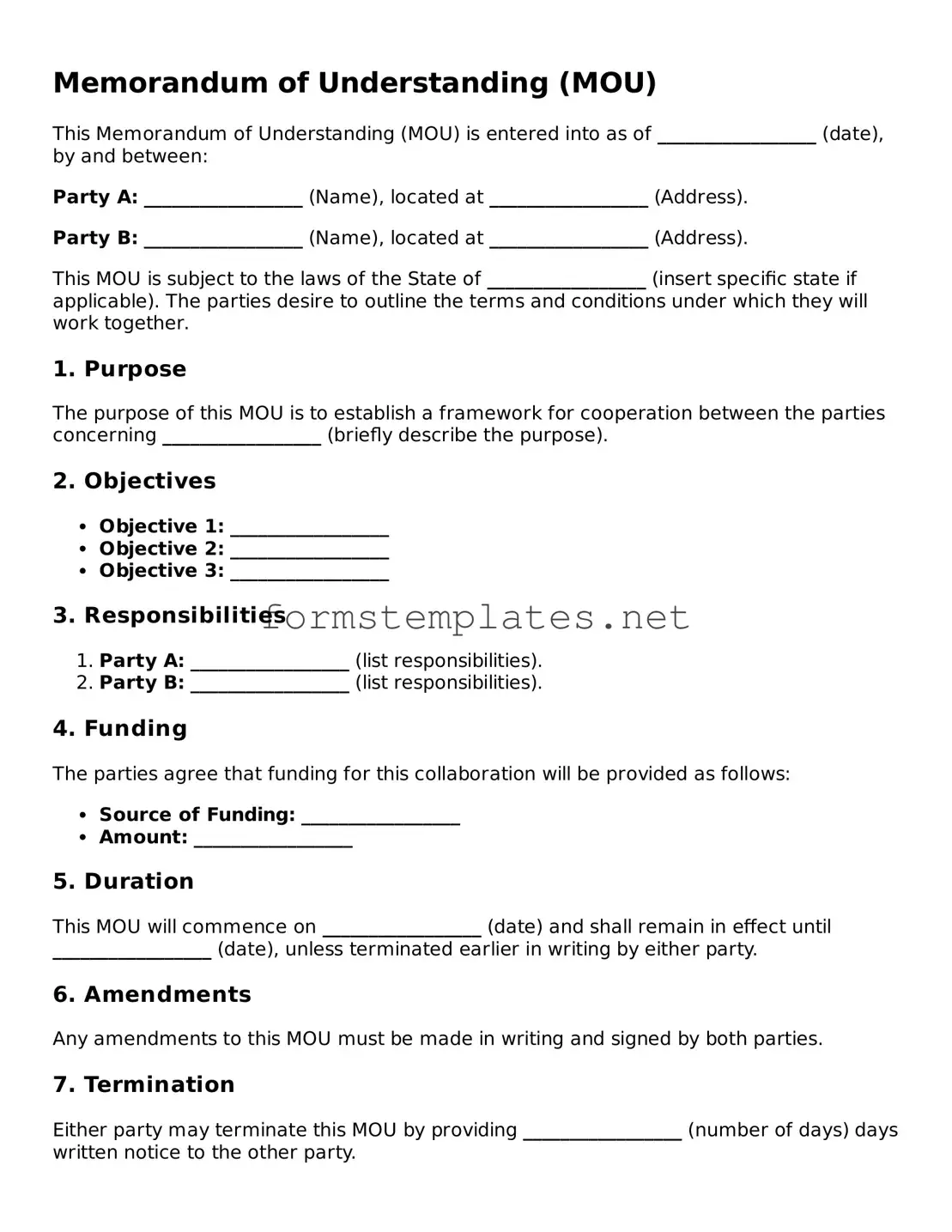Memorandum of Understanding (MOU)
This Memorandum of Understanding (MOU) is entered into as of _________________ (date), by and between:
Party A: _________________ (Name), located at _________________ (Address).
Party B: _________________ (Name), located at _________________ (Address).
This MOU is subject to the laws of the State of _________________ (insert specific state if applicable). The parties desire to outline the terms and conditions under which they will work together.
1. Purpose
The purpose of this MOU is to establish a framework for cooperation between the parties concerning _________________ (briefly describe the purpose).
2. Objectives
- Objective 1: _________________
- Objective 2: _________________
- Objective 3: _________________
3. Responsibilities
- Party A: _________________ (list responsibilities).
- Party B: _________________ (list responsibilities).
4. Funding
The parties agree that funding for this collaboration will be provided as follows:
- Source of Funding: _________________
- Amount: _________________
5. Duration
This MOU will commence on _________________ (date) and shall remain in effect until _________________ (date), unless terminated earlier in writing by either party.
6. Amendments
Any amendments to this MOU must be made in writing and signed by both parties.
7. Termination
Either party may terminate this MOU by providing _________________ (number of days) days written notice to the other party.
8. Signatures
By signing below, the parties indicate their agreement to the terms laid out in this Memorandum of Understanding.
Party A Signature: ______________________ Date: _______________
Party B Signature: ______________________ Date: _______________
